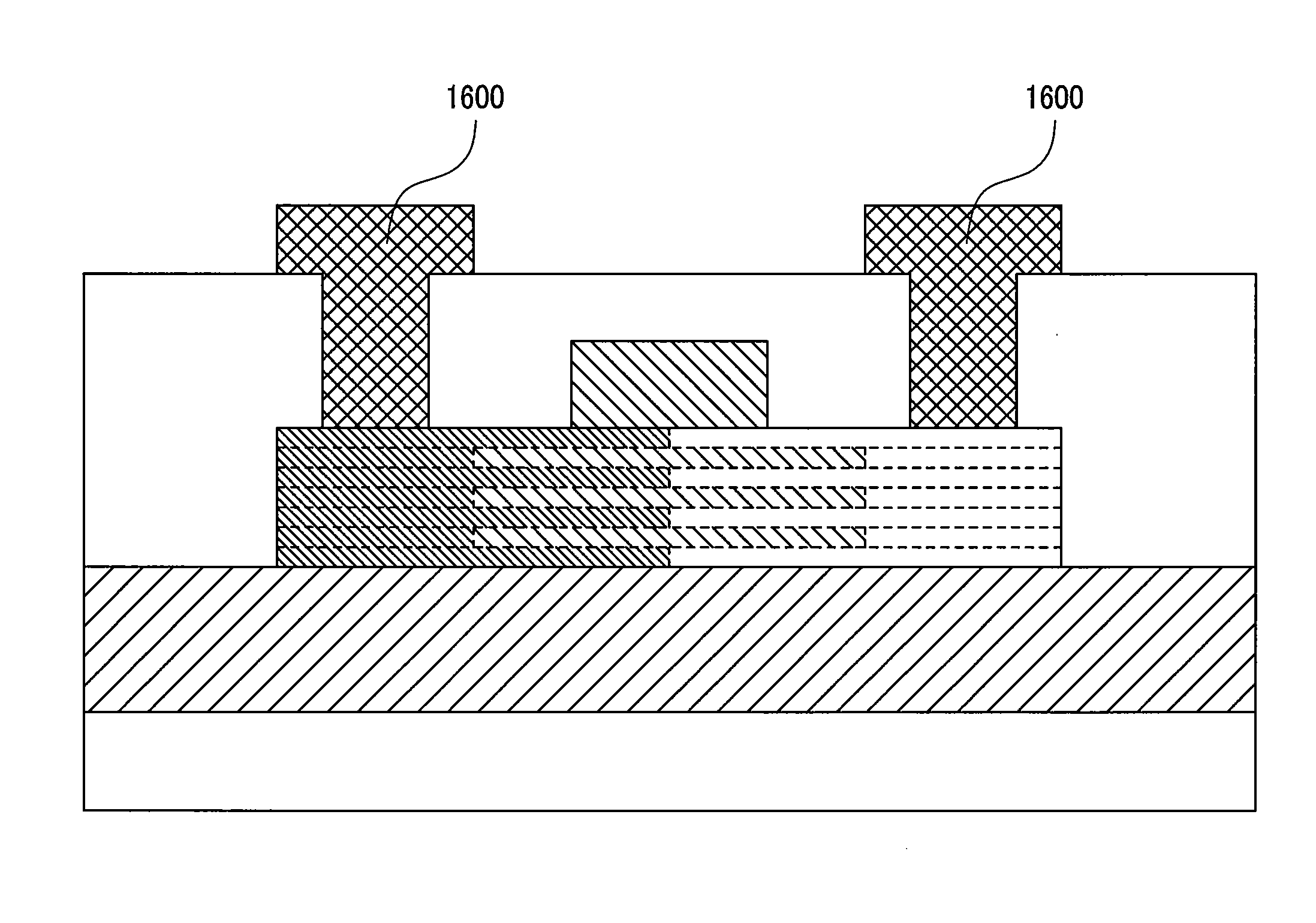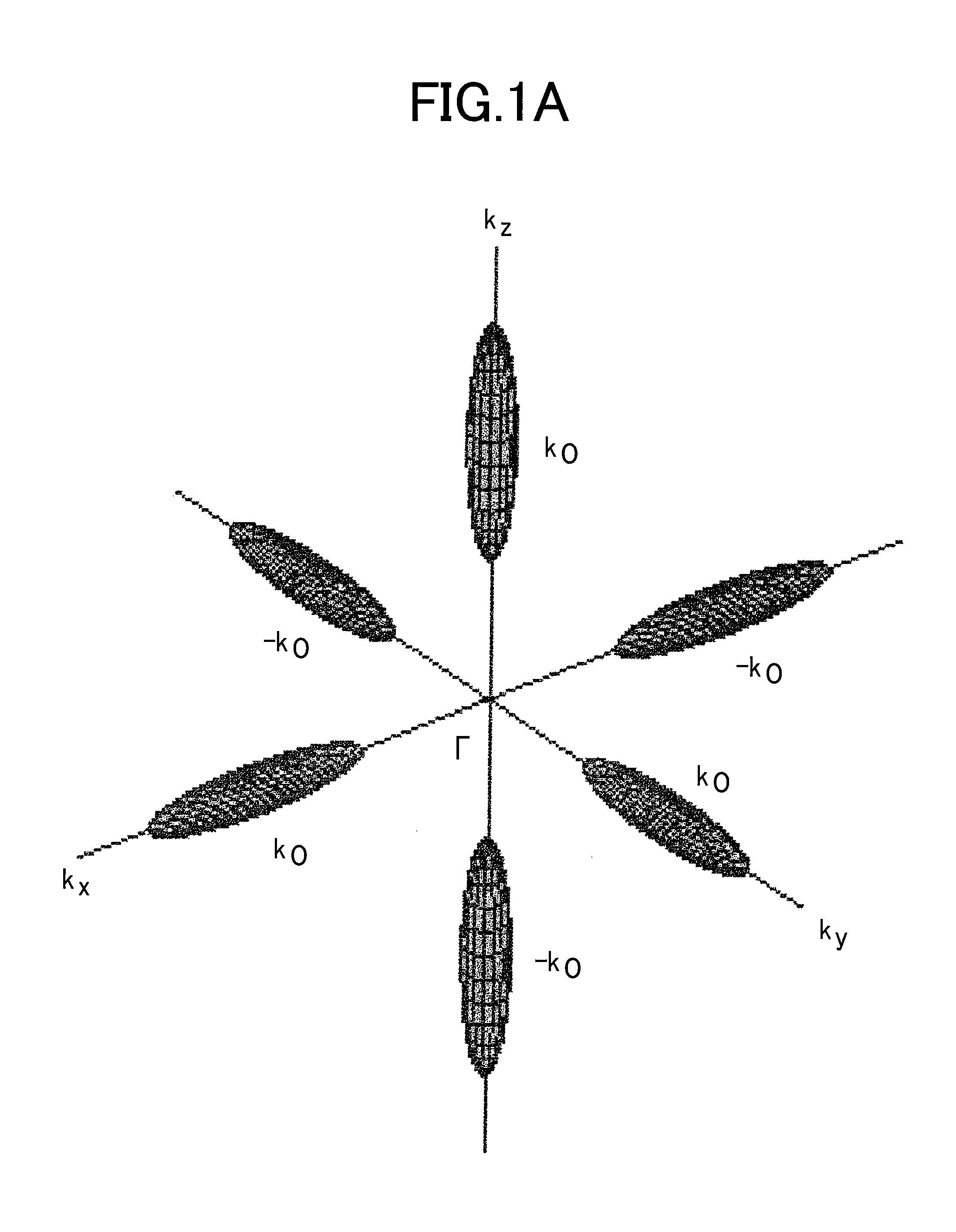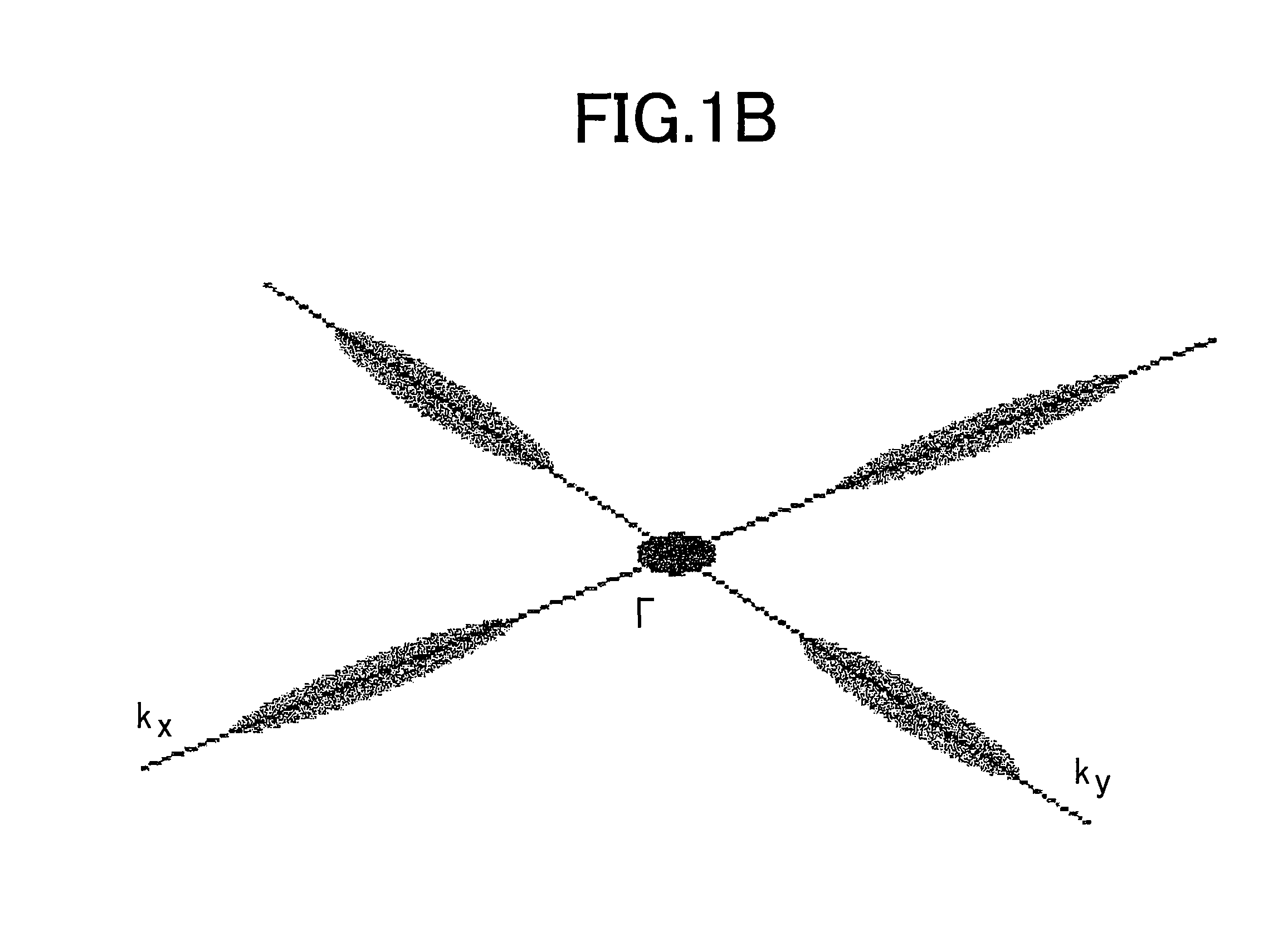Semiconductor LED, opto-electronic integrated circuits (OEIC), and method of fabricating OEIC
a technology of optoelectronic integrated circuit and semiconductor, which is applied in the direction of semiconductor devices, solid-state devices, optical waveguide light guides, etc., can solve the problem that no silicon light emitting diode has been obtained, and achieves high luminescence efficiency and high efficiency
- Summary
- Abstract
- Description
- Claims
- Application Information
AI Technical Summary
Benefits of technology
Problems solved by technology
Method used
Image
Examples
embodiment 1
[0134]FIG. 11 is a planar layout for an integrated light emitting diode according to the present invention; FIG. 12 is a planar layout for a light receiving element according to the present invention; and FIGS. 13 through 18 are schematic cross-sectional views for stepwisely explaining the fabricating process of the integrated light emitting diode. In each of the drawings, a cross-sectional view taken along line A-A′ of the planar layout (FIG. 11) is shown on the left hand side, and a cross-sectional view taken along line B-B′ of the planar layout (FIG. 11) is shown on the right hand side.
[0135]A 1 μm thick silicon oxide film 1900 is formed on a silicon support substrate 1100 and an SOI wafer having a 100 nm thick single crystalline silicon layer 1120 is thermally oxidized on the silicon oxide film, to form a 20 nm oxide film (FIG. 13). A silicon thin film formation region (fin) and a contact region are formed (FIG. 14) by using an active region pattern 1150 shown in FIG. 11. Herein...
embodiment 2
[0149]In this embodiment, a plurality of fins are employed as an integrated light emitting diode. The fins can be formed, independently of the patterning. A so-called spacer process is employed as follows. FIG. 43 shows an exemplary planar layout, and FIGS. 45 through 60 stepwisely show the fabricating process by using cross-sectional views (A-A′ cross section of FIG. 43). This method is based on a dummy pattern 1152, but the dummy pattern can be arranged in two different forms, i.e., a convex pattern or a hole pattern. FIG. 43 shows a convex pattern, and FIG. 44 shows a hole pattern. According to the fabricating process of this embodiment, after the dummy pattern 1152 of FIG. 43 and FIG. 44 is formed, fins are self-aligned with respect to the dummy pattern. In general, because of the self-alignment, spacers 1202, 1203, 1204, 1205, 1981, 1982, and 1983 used for fin formation are not necessarily found in a photo mask, but they are indicated at pattern positions of the layout after th...
embodiment 3
[0177]This embodiment discloses a luminous region expansion method that does not require a laminate film or plural wall-type silicon thin films disclosed in Embodiment 1 and Embodiment 2. In a light emitting diode according to this embodiment, as shown in FIG. 69, silicon semiconductor regions 3303 and 3304 of different conductive types are arranged adjacent each other on a silicon oxide film 3302 formed on the surface of the silicon substrate 3301, and a silicon oxide film 3305 is formed in the periphery of the interface of these two semiconductor regions only in such a manner that it covers a portion of the surfaces of the two semiconductor regions. Meanwhile, a silicide 3306, the compound of silicon and a metal, is formed on the surface of a semiconductor region that is not covered with the silicon oxide film 3305. In addition, a part of the silicon substrate 3301, that is, the silicon substrate in a region having the light emitting diode formed thereon, is removed to expose the ...
PUM
 Login to View More
Login to View More Abstract
Description
Claims
Application Information
 Login to View More
Login to View More - R&D
- Intellectual Property
- Life Sciences
- Materials
- Tech Scout
- Unparalleled Data Quality
- Higher Quality Content
- 60% Fewer Hallucinations
Browse by: Latest US Patents, China's latest patents, Technical Efficacy Thesaurus, Application Domain, Technology Topic, Popular Technical Reports.
© 2025 PatSnap. All rights reserved.Legal|Privacy policy|Modern Slavery Act Transparency Statement|Sitemap|About US| Contact US: help@patsnap.com



